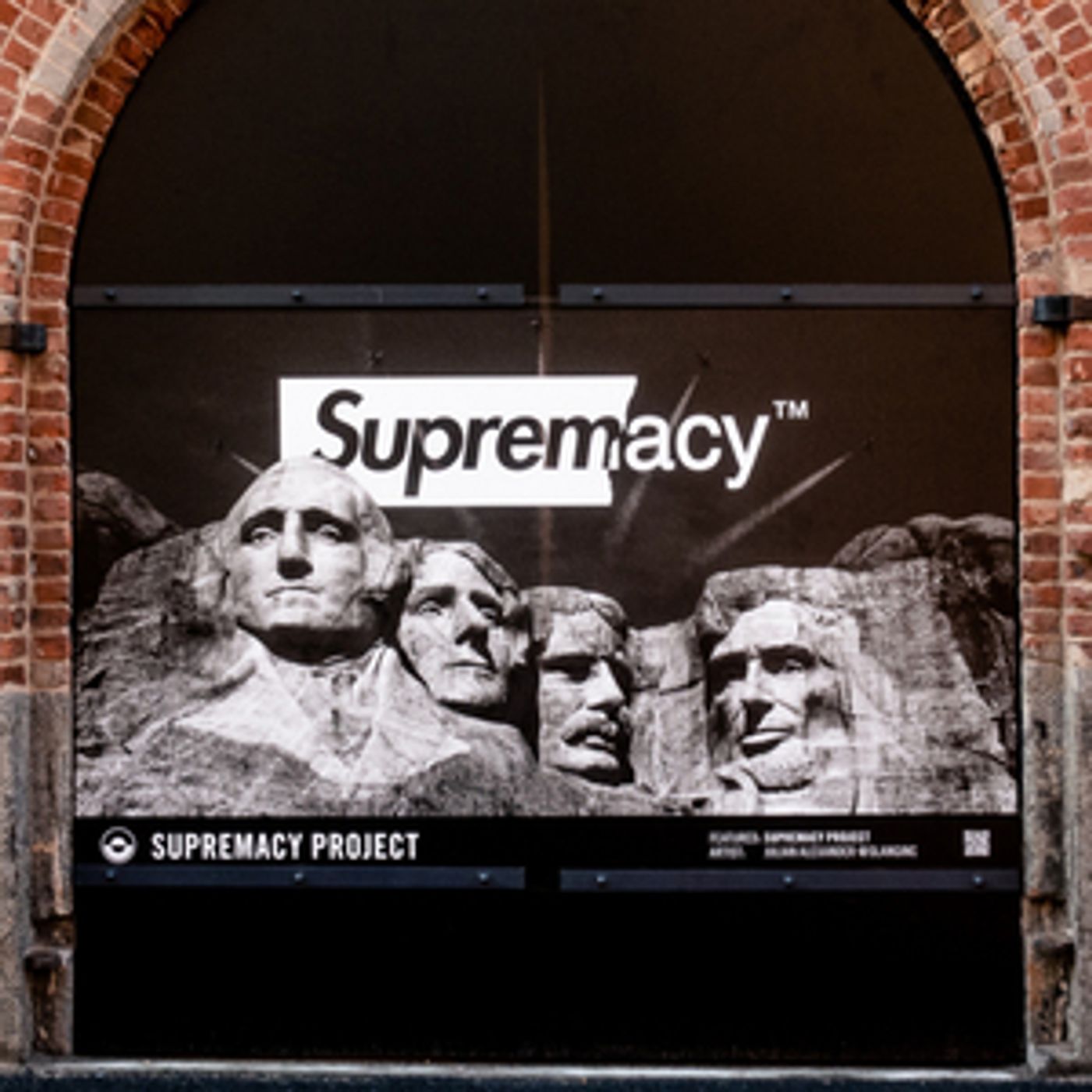St. Ann's Warehouse Presents SUPREMACY PROJECT
Supremacy Project captures the omnipresence of injustice in our country with striking imagery and text. On view now through April 25.

St. Ann's Warehouse will present Julian Alexander & Khadijat Oseni's Supremacy Project, a public art project addressing the systemic oppression and violence BIPOC communities are fighting to end through art.
On view through April 25, the installation draws on the powers of photography, design, poetry and branding to evoke the ubiquitous nature of injustice in American society. It comprises two exhibitions: Michael T. Boyd's Lost Ones. Culture Found., which reexamines the legacy of widely known victims of police brutality and hate crimes, on the building's Water Street facade; and Julian Alexander and photographer Steven "Sweatpants" Irby's Supremacy: Who Protects Me From You?, which illuminates the systemic inequities at the core of our government, on the Dock Street exterior of St. Ann's Warehouse.
Supremacy Project began shortly after the killing of George Floyd by Minneapolis Police officer Derrick Chauvin in summer 2020. In response, Alexander and Oseni installed Supremacy: Who Protects Me From You? as rotating 21-foot murals at the nearby Brooklyn Navy Yard. The murals collided familiar branding fonts in one word-"Supremacy"-written across black-and-white representations of the judicial and executive branches: a group of police officers in riot gear during a Black Lives Matter protest in Times Square; and planes appearing like a crown above the granite heads of Mount Rushmore. (A third installment representing the legislative branch will debut in Spring 2021). The pieces provoked conversation among passersby and on social media throughout the summer and fall, and the second mural was defaced, and not just once or by one person, reinforcing the work's message.
"The reason I created this work was a sense of urgency," Alexander says. "I had something to say and this was how I chose to express myself. Supremacy is chiseled into the foundation of our society, prevalent in all three branches of our government-and I wanted to approach that using the familiar language of brands that we know people respond to. It's a huge part of the psychology of how art sparks dialogue. "
At the end of 2020, Oseni and Alexander were connected to St. Ann's Warehouse Artistic Director Susan Feldman and artist Michael T. Boyd almost at the same time, and the larger vision for the St. Ann's Warehouse installation came to life organically. Feldman is a lifelong activist who grew up in the 1960s and understands "that people need forms of expression and ways to gather together and emote together and feel things together." Boyd is a creative advertising professional who previously was sharing his personal art with the world on social media.
Feldman invited the artists to transform the Brooklyn waterfront theater's facade, continuing The Warehouse's Urban Canvas program, which offers a space for urgent art in an historic moment of mourning and protest.
Oseni orchestrated the expansion of the Supremacy Project. Alexander and Irby's Supremacy: Who Protects Me From You? is reformatted and resituated from the Navy Yard to the exterior archways of St. Ann's Warehouse as one of two graphic triptychs. The other, Michael T. Boyd's Lost Ones. Culture Found. sets images of Sandra Bland, Elijah McClain and Emmett Till within the visual vocabulary of Blue Note album covers-creating evocative portraits that communicate dignity and potential, complicating society's tendency to reduce victims to just their final moments. Each of Boyd's graphics is accompanied by a haiku, serving as "liner notes", from poets Cyrus Aaron, Mahogany L. Browne, and justin el.
Both Alexander and Boyd apply their own work in design-and their knowledge of branding's psychological and sociological effects-to their approach to this project.
"The idea of ownership-or the meaning of a word, or a legacy, and defying that definition that others might create for you-connects both sides of this project," Boyd says. "Lost Ones. Culture Found. really is about taking what people thought they knew about these individuals and giving them an alternative to that definition. We all knew that Elijah McClain was a violinist and would play for animals in a nearby kennel. Who was he? Who could he have been beyond the victim he was seen as in the last moments of his life? This is about redeeming them and giving them some of their agency back."
Oseni adds, "Art can be a powerful tool helping society navigate the unseen and reframe the narratives of the unheard. It's been both revitalizing and sobering to see how the Supremacy Project is acting as a catalyst helping communities honor the legacies of victims of police brutality and hate crimes like Sandra Bland, Emmett Till, and Elijah McCain by drawing into central focus real conversations, actions and calls for accountability against the systemic racial roots and abuse of power that have brought us to this watershed moment as a nation."
All those involved in the Supremacy Project believe true racial justice cannot exist while barriers to safety still exist.
St. Ann's Warehouse launched its Urban Canvas initiative last summer to bring art outdoors amid COVID-19 shutdowns. Brooklyn-based street photographer/visual artist Kobie Procter transformed St. Ann's New Dock Street façade into a projection canvas the size of a movie screen-occupying the walls with large-scale images he shot from the New York Justice and Equality Riots and Protests of 2020. Procter then curated a series of timely, provocative exhibitions by other photographers.
Videos

